The forgotten woman who took on white supremacy in Victorian Britain
When a Quaker woman from Somerset started publishing a radical newspaper that challenged late-19th century readers to think about race, her ideas were far ahead of her time, and built the foundations of the movement for years to come, says Liam Drew
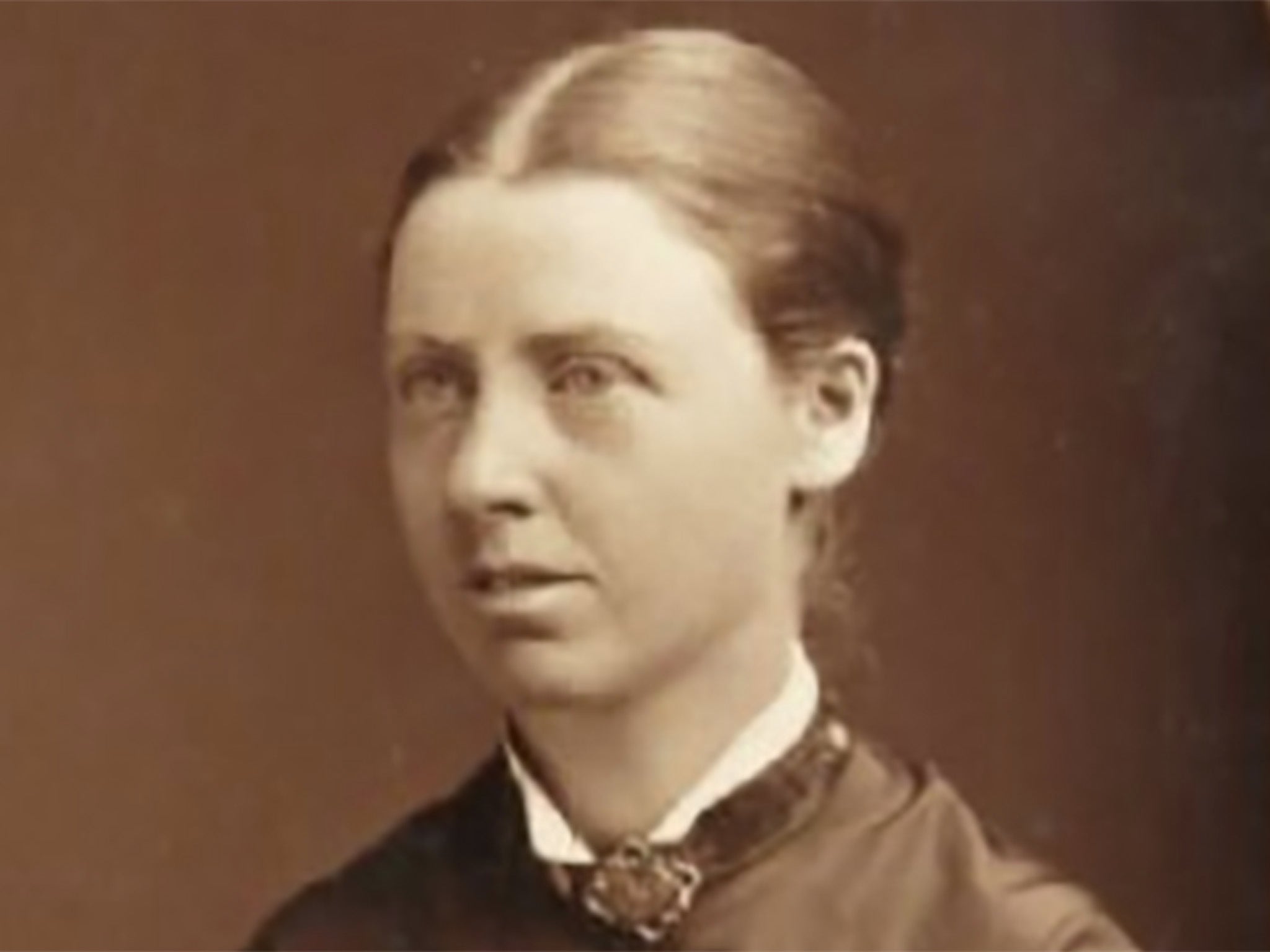
It’s 7 June 1878 and Catherine Impey is riding a train from Philadelphia to Baltimore, crossing the Mason-Dixon Line. Aged 30, Impey is in the US for the first time, 3,500 miles from her home on a Somerset apple farm. The heat is relentless and growing worse the further south she goes. Passing through forests, Impey notes how alien the plants seem. At the stations, she takes in the crowds of African Americans.
Impey is tired. At 6:30am that day, a telegram had summoned her and her companions to Baltimore to attend a meeting. She ate half a breakfast and raced to the station, recent events weighing heavily on her mind. She’s carrying a bunch of wild magnolias, bought for her by her friends from a child at one of the stations. Lying back in her seat, Impey gazes at them and sighs: “Oh, such beauties.”
The week before, Impey was in Boston, a delegate at an international Quakers conference convened to discuss their global temperance campaign. Equally at stake had been the movement’s unity. These are fragile, fractious times. Thirteen years after the American Civil War and emancipation, America’s new reality is still being made. And many non-American Quakers are concerned about lodges in the southern states being segregated.
Impey stayed at the home of writer, activist and former slave, William Wells Brown. There, she learnt about African Americans’ experiences, and Wells Brown and his associates’ political campaigning. When the southern states were discussed at the meeting, Impey vociferously denounced them.
She saw no way in which racial discrimination could be compatible with the Quaker conviction that all humans are equal. The English, Australian, Canadian and Scottish delegates spoke out against racial prejudice and were slandered and abused for it. It’s unclear if they were expelled from the meeting or if they quit.
Her train pushing south, Impey waits to encounter a former slave city. There, walking past markets and auction blocks where people were sold, she feels history glower from the Baltimore streets. She wonders at how even the churches are party to separation and bigotry. When she takes the stage at the Quaker gathering, she despairs at the large, entirely white crowd.
These experiences will harden the resolve setting in Impey now. In five years’ time, she will write to Frederick Douglass, asking the great African American activist to help her be of more use to black Americans, and relaying to him her dream of an international organisation to “take the front in the cause of human equality”. A decade from now, she will launch Britain’s first anti-racism periodical: Anti-Caste, a publication in which she will bid to amplify marginalised voices. And in 15 years, Impey will become the world’s first white editor to publish a photograph of a lynching in order to condemn it; co-found an anti-racism society; and invite Ida B Wells’ to tour the UK, contributing to the American activist’s growing influence and drawing crowds of thousands.
Then, everything will come tumbling down, Impey’s efforts and this growing UK movement undone by two cruel events.
For now, in the smothering Maryland heat, Impey delights in her magnolias. As the women she travels with tease her for her idealism and romanticism, likening her to a bride, Impey humours them, then turns to stare out the window at the black farm workers in their yard-wide straw hats, planting and hoeing corn.
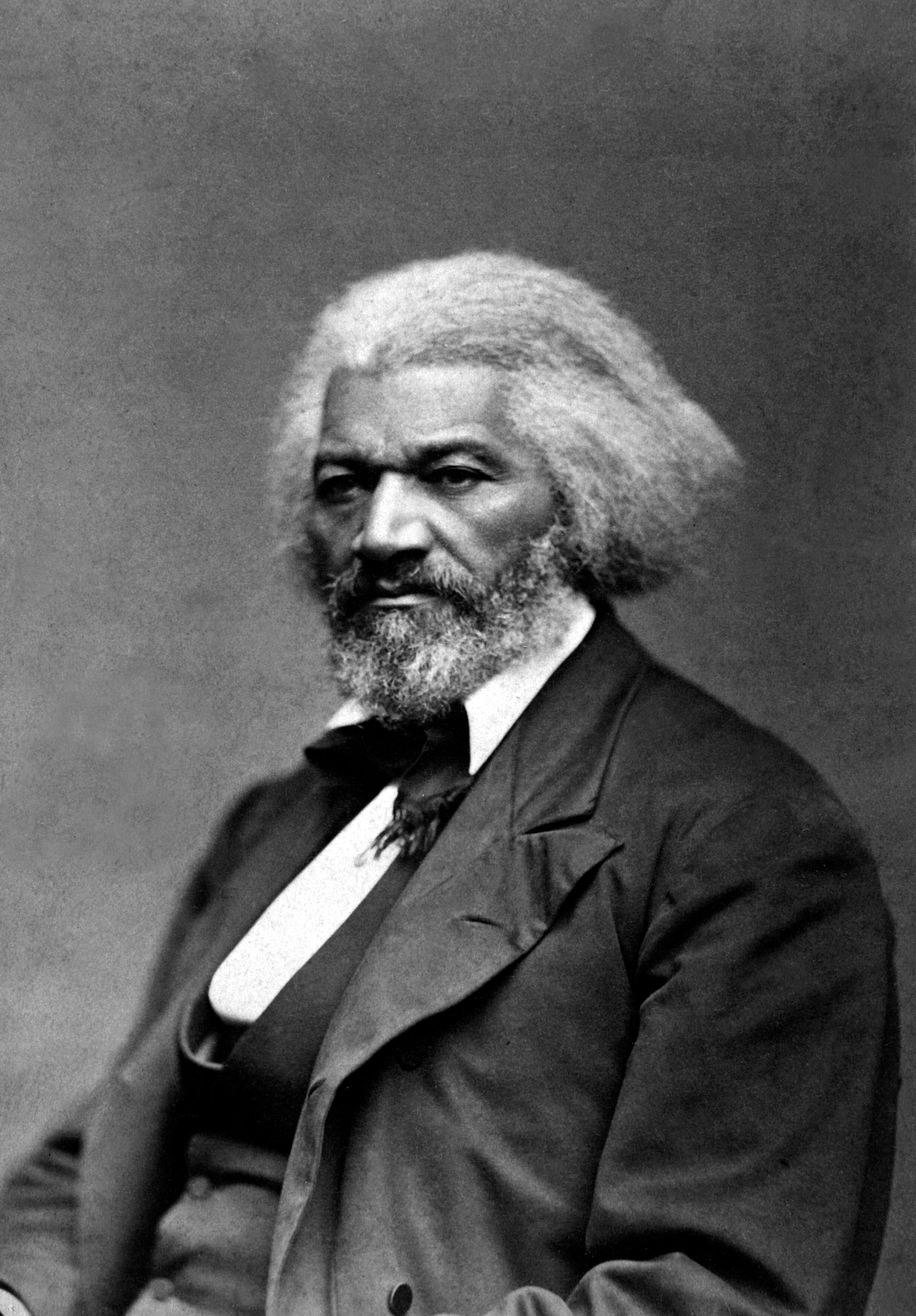
This woman, who you’ve likely never heard of, lived in the Somerset village of Street, born there in 1847 and dying there in 1923. I, too, grew up in Street and barely anyone there knows of Impey either.
I first read her name last year – while the protests sparked by George Floyd’s murder raged – when a mindless internet meander took me to my hometown’s Wikipedia page. At the bottom of an unremarkable list of notable residents, it said: “Catherine Impey … friends with Frederick Douglass, Ida B Wells and other African Americans with whom she continued a global movement against racism.”
“Wow,” I thought. Then, immediately, “I wonder where she moved to, to do that?”
Soon, I was reading a brief online biography and learning that Impey had never left Street. What’s more, these famous African American activists had all visited her there. I asked around and posted on Street’s Facebook page – the only people who’d heard of her was an acquaintance whose parents were Quakers and, ironically, a handful of people who’d read a note about this resolute teetotaller on the wall of the local Wetherspoons.
It feels germane that Street is a quiet, small place; a modest, sober place; an overwhelmingly white place. Its defining feature is that it’s home to the Clarks shoe company. Even the people who love it best would say that nothing much happens in Street. Growing up there, through the 1980s and ’90s, my friends and I were happy, but felt always that culture’s forward-facing edges existed in another world.
The village neighbours Glastonbury – forever that town’s strait-laced sibling – 30 miles south of Bristol. In Impey’s day, it was a busy port with both slavery and antislavery legacies. During her life, Clarks helped transform Street from a straggly farming and quarrying settlement, with about 1,500 residents, into an industrial, shoemaking village of about 4,000 inhabitants.
If Impey’s memory is largely lost to Street, it’s even more so beyond Somerset. And that loss would be much greater if it wasn’t for Caroline Bressey, who in 2014 published a meticulously researched academic book entitled Empire, Race and the Politics of Anti-Caste.
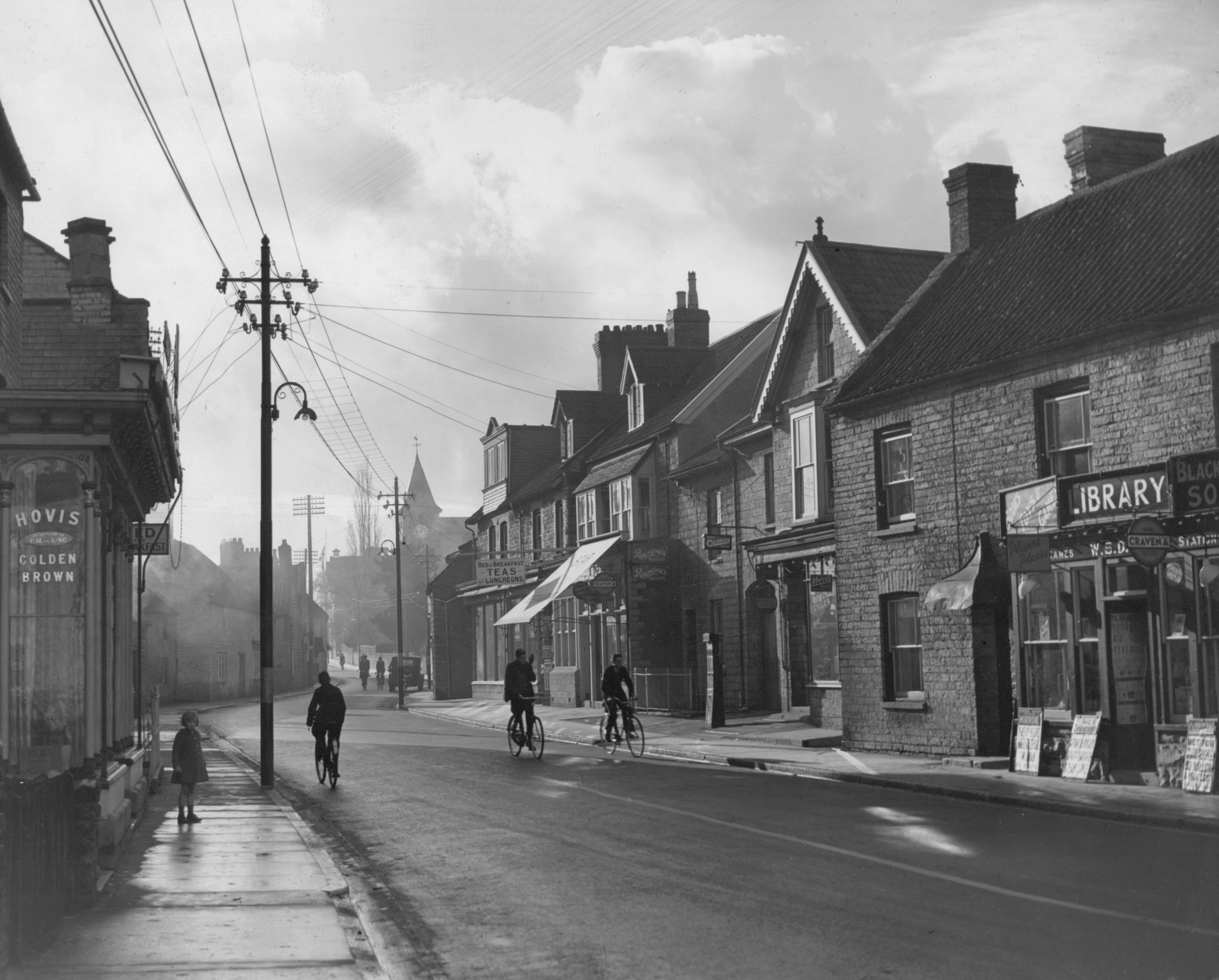
This book describes how Impey published a profoundly radical newspaper that challenged late-19th century readers to consider the reasons why societies were being divided along racial lines – her ideas often strikingly ahead of their time. These ideas found receptive audiences across Britain and the national movement briefly swelled. The collapse of that movement leaves a significant “what if?” With its demise, a nuanced consideration of racial injustice lost the foothold it seemed to be gaining in British politics.
Bressey – a cultural and historical geographer at University College London – told me recently that she first encountered Impey in Ida B Wells’ autobiography, Crusade for Justice, while researching her PhD on the forgotten stories of black women in Victorian London. In that book, Impey cuts an intriguing figure, described fondly by Wells, first in America, then in Britain as Wells undertakes her first tour. But while Wells is famous in black and feminist history – and has recently been more widely acclaimed – Impey was virtually unknown.
Even so, when Bressey began researching her book in 2003, her interests lay “in the idea of an antiracism community, rather than simply an individual”. The editor of Anti-Caste was central to Bressey’s work on transatlantic activism and how Victorian publishing innovations affected this – but as a person, Impey seemed always out of reach.
The British Library had failed to archive Anti-Caste, but Bressey could read it at the Friends House in London. At Clarks in Street, there are items Impey wrote for a local newsletter entitled the Village Album. And Bressey gradually tracked down articles Impey wrote for Quaker publications and some of her letters. But most of Impey’s voluminous correspondence and the documents that went into producing Anti-Caste are untraceable. Impey was an unmarried woman with no children, and nobody thought to preserve her archive.
Five years into the project, however, Bressey’s partner made a speculative inquiry of a friend whose surname was Clothier, Impey’s mother’s maiden name. This friend knew nothing of Impey but asked his family. An aunt replied saying that just months earlier, she’d cleared out her attic and found among her father’s paperwork a large folder – previously unknown to her and untouched for decades, it was marked “Catherine Impey”.
This woman – whose great grandfather had been Impey’s uncle – decided it should be Bressey who unsealed the folder. Handing it to her in her dining room, she watched Bressey’s electric response as she spread its contents across the dining table. Before her was a scrapbook Impey had begun as a teenager and a guestbook logging 50 years of visitors to Impey’s home. “That was a transformative moment,” says Bressey, “those books became very precious.”
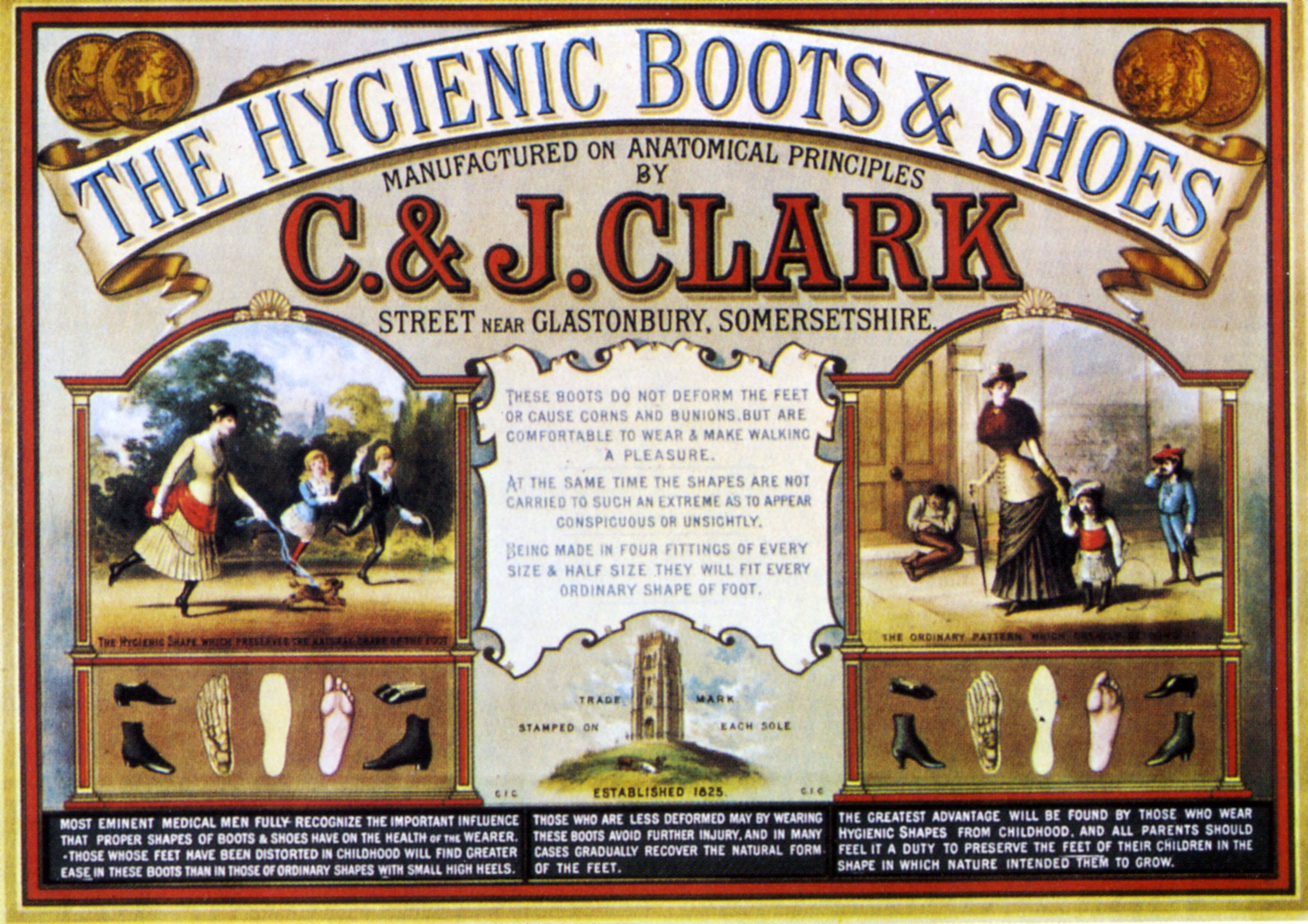
Empire, Race and the Politics of Anti-Caste is a rigorous – sometimes dense, always fascinating – historical analysis. But Bressey opens it with a personal meditation based around these two documents, in which she expresses “the dangers of loving a ghost”.
The scrapbook reveals a serious and pious teenager, but one who delighted in poetry, botany and art. Impey transcribed verses, pressed flowers and loved to draw. There are dance cards too, plus pictures of friends and train tickets to London.
Aged 16, politics became an increasing presence. Biblical passages starting to mingle with newspaper clippings and political commentary and Impey joined the National Reform Union, which sought the vote for women. She celebrated the Liberal Party’s 1868 general election victory and mocked her local Tory MPs.
The case against slavery had rested mainly on the shame of it and on pity for the enslaved – neither of which challenged the idea of white supremacy
A drawing of her family home – Askew House – shows a staunch stone farmhouse surrounded by flower gardens and orchards. Impey shared it with her father’s parents, who were farmers and horticulturists, and her older sister, Ellen. Messages in the visitors book are routinely warm and often gushing. It was clearly a convivial household that welcomed guests easily.
This Quaker family – frugal, teetotal and vegetarian – was comfortably middle-class without being wealthy. Ellen and Catherine were given good educations and each became prominent in local circles and village politics, as many women in their family had. When Impey’s father died in 1886, Ellen took over the running of the farm and, through this, unflaggingly supported her sister’s activism.
The scrapbook shows no particular interest in racial matters but when the guestbook begins, the topic has clearly become a focus. In January, 1877, a cousin wrote, “Negro. Question. Spoiled. Digestion.”
At this point, Impey is 29 and 18 months from heading to America to represent the views of English quakers on segregation. And in the summer of 1877, William Wells Brown, the man with whom Impey stayed in Boston, signed his name.
Like Frederick Douglass, Wells Brown escaped slavery and published an influential slave memoir. Also like Douglass, he travelled to Britain – as numerous formerly enslaved activists did – to advocate for abolition, then later for equality. These campaigners wanted the British to wield their political influence, stressing that America had been under British rule when slavery was installed there.
Another of their core arguments was that slavery was fundamentally unchristian – and they believed that by relaying first-hand accounts of its horrors to British audiences, anybody with Christian values would be motivated to act.
These themes remained intact unchanged by abolition in 1865. As the white civil rights activist Albion Tourgeé later wrote to Impey, emancipation did nothing to diminish racism. The case against slavery had rested mainly on the shame of it and on pity for the enslaved – neither of which challenged the idea of white supremacy. “There is practically no antipathy to the coloured man as a subordinate and inferior,” Tourgeé wrote, “the antagonism to him as an equal … is 10 times as fierce.”
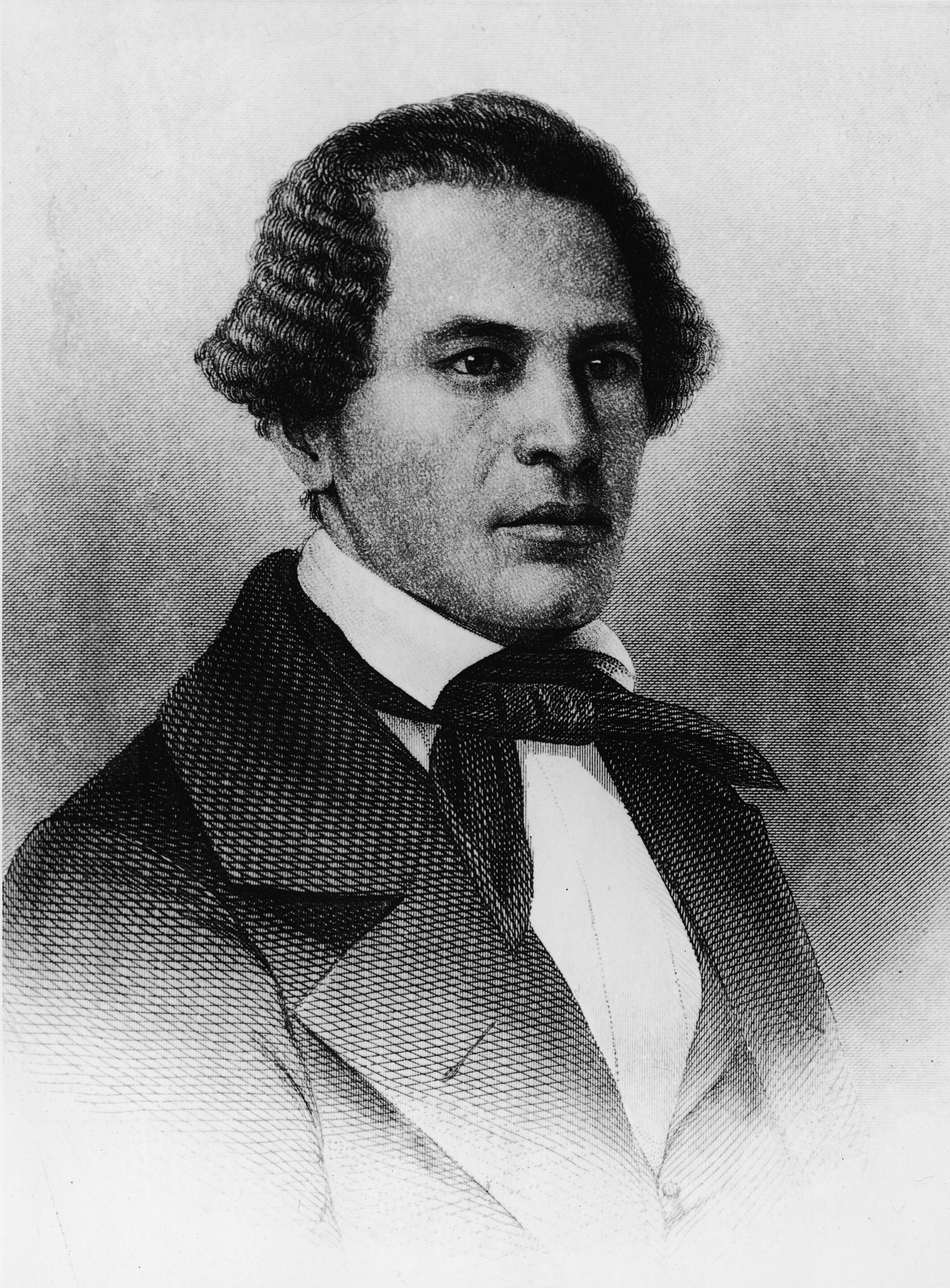
All of this resonated deeply with Impey’s religious convictions. “Her equality is very clearly structured through her faith,” says Bressey, “’We are all God’s children, we are all equal.’ That’s it.”
Quakerism – with its rejection of dogma and hierarchical church systems – would have shaped Impey in other ways too. As one prominent Quaker once said, religion “does not rise outside and flow in; it springs up inside and flows out”. Quakers are encouraged to live purposefully, in response to the truth as they encounter it.
By Impey’s time, there was a network of British Quaker abolitionists – one family in Newcastle actually bought and legally gave Douglass and Wells Brown their freedom. These connections being the reason Wells Brown came to visit Impey. There are no records of what happened during Wells Brown’s stay but soon he opened his Boston home to Impey.
Arriving in America in 1878 for the temperance conference, Impey was immediately immersed in African American-led reformist circles. She also met an ageing William Lloyd Garrison, a white reformer who’d founded an antislavery newspaper in 1831.
These experiences clearly galvanised Impey to speak out against segregation at the meeting – and to willingly suffer the consequences of those actions. The fallout of taking that stand, and her experiences in Baltimore soon after, marked Impey’s full awakening. On her return, she was a vociferous campaigner for racial equality across all Quaker societies.
Soon, however, Impey felt the limits of what she alone could achieve. In London, in 1882, after giving a short speech about black people’s experiences in the American South, a woman from New York stood and claimed that what Impey had said was untrue. Given no chance to reply, Impey felt undermined, and feared that people questioned whether they could trust her second-hand reports.
The following year, she wrote to Douglass, then 66 years old and the most famous black person in America. “Dear Mr Douglass,” she began, “I want you to help me be of more use to coloured Americans. I have really been doing my best for more than four years and though I am no great personage I do feel that my persistence has had some effects.”
She described the 1878 meeting, then how she’d “wanted to hear what could be done to remove the dreadful (and yet foolish) prejudices”.
“I want to be doing more,” she continued, “I believe we want a great union or anti-caste society – to take up the work where the anti-slavery society dropped it.”
Her use of caste – a term most obviously associated with social tiers in India – reflected Impey’s nascent desire to turn away from the very word “race” and its connotations, and to find a language that captured the social construction of divisions.
She concluded, “I think if English people knew one hundredth of part of what I have learned … that America would be stung into activity by the indignation that England would give voice to … I mean to keep puffing away until my last breath.”
If Douglass replied – as Bressey suspects he did – the letter is lost.
Impey was next in the US three years later, in 1886. She went to attend a Quaker meeting aimed at finding compromise and mending the schisms between Quaker groups over segregation. But for Impey, there were no concessions to be made on this matter. She arrived, with supportive testimonies from absent colleagues, ready to fight.
As the meeting proceeded, her stance was less and less appreciated. Even Joseph Malins – a prominent English Quaker who’d stood shoulder-to-shoulder with Impey in 1878 – now claimed that she’d garnered support in England by exaggerating the extent of southern prejudices. Impey dismissed this and circulated a pamphlet that said American churches were a disgrace to Christianity – a manoeuvre that won nobody over.
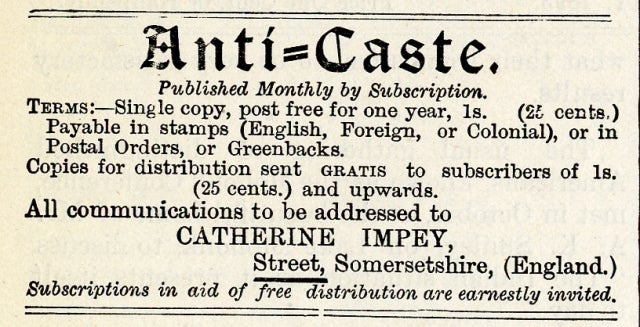
When delegates argued that African Americans often imposed segregation upon themselves, Impey quoted a black colleague’s account of the humiliations she’d suffered when trying to attend a white church in Boston.
When the delegates voted, the result was 47 to one for reunification. Impey left the next day.
The following year, Douglass undertook his final tour of the UK. Impey wrote to him repeatedly to secure a meeting, wanting to gain his backing for the periodical she was planning. She obviously would have known that his support would help legitimise Anti-Caste, but Bressey says that it went much deeper than that.
“The endorsement is real to her in a different way – it's not superficial in any way,” she says, “It’s important for her that her work is taken seriously by African American colleagues, because that indicates to her that it’s going in the right direction; that it’s something that the people she’s engaged with take seriously and respect – and think is valuable.”
Impey met Douglass in Street in July 1887 and he gave her his backing. A letter he wrote to her afterwards was unearthed just last year at the Bodleian Library in Oxford. His brief note, sent with a $5 donation, said: “The work you have undertaken must ultimately succeed.”
Anti-Caste was launched in March 1888, sold for a penny or two cents, to cover costs. “To our readers,” it began, “We keep our paper small that it may be read even by busy people. We hope little by little to give some insight into the evils of caste as it prevails in countries where our white race habitually ostracises those who are even partially descended from darker races; and by circulating in our pages the current writings of prominent and thoughtful persons of coloured races hope to give them fresh opportunities of presenting their case before white readers.”
Amplifying the work of writers of colour was a central goal of Impey’s project. One consequence of segregation was that black and white audiences typically read different newspapers. But more importantly, although Impey wrote editorials – she wasn’t seeking to speak on behalf of people, she wanted them directly heard.
“We hope little by little” fits Impey’s quiet but unwavering belief that if she could share the truth of the social injustices she’d come to know, she’d eventually change readers’ minds and actions. “She comes across as someone who tries to work through gentle persuasion,” Bressey says, “But on the other hand, she’s clearly insistent and very confident – maybe that comes from a spiritual belief that this is the right thing to do.”
Yet, from this modest piety, something radical was born. For instance, while the first issue laid bare Anti-Caste’s Christian foundations, Impey immediately criticised the exclusion of a young black man from a YMCA art class, showing readers that she was going to challenge Christian institutions.
More radical was her interpretation of inequality and her bid to find a language with which to talk about it. Constantly, Impey tried to make white readers see how white people had built the systems that supported racial oppression and the idea of white supremacy. “She thinks white people need to take responsibility for the actions that they are doing in the world,” Bressey says. Impey wanted to say to white readers, “it’s our problem to sort out – in creating these structures, we have debased ourselves.” Once, Impey told a reporter interviewing her that “the emancipation of the whites” from their prejudices and bigotry was the hardest task of all.
The title Anti-Caste was born of a want to show how white people were creating social categories along racial boundaries. “Caste”, Bressey believes, was a term Impey would have encountered in America, sometimes as “colour caste”. “For some people,” Bressey says, “‘caste’ is a way of keeping people in their place. For others, it’s a way of highlighting how racism’s a social construction.”
“The way she tried to think through the language of antiracism is one of the most radical contributions that Anti-Caste makes,” Bressey says, adding, “she’s not egotistical in her work. She doesn’t make any claims about being the first of anything, or being radical. I think she’s just trying to find a way.”
When the term race was unavoidable, Impey often placed it in inverted commas, long before this was common. “It’s profoundly difficult to find ways to talk about anti-racism without using a language of race,” Bressey says, “and I think the fact that we haven’t got much further than she did, over 100 years later, is testament both to how difficult it was, and how interesting it is that she took language seriously.”
As Impey turned out monthly issues of Anti-Caste, her focus remained US-centric but she also gathered and reprinted materials from across the commonwealth, exploring events in India, South Africa and Australia. One thing that, today, feels absent in Anti-Caste is any in-depth engagement with issues of racial discrimination in the UK. While the country was not overtly segregated, Impey nevertheless failed to engage with the many subtler conflicts present in her home nation. This, perhaps, was a result of Impey’s living outside of the more diverse urban centres.
Initially, she printed nearly 2,000 copies of Anti-Caste each month, growing to a plateau of 3,500 copies. Though Impey started to include lists of around 200 donors and subscribers, the paper’s reach was extended – and made unknowable – by numerous supporters distributing free copies to libraries, reading rooms and other communal spaces. Consequently, Bressey says it’s hard to trace precisely the white and black, national and international “textual community” Impey created. Nevertheless, her sleuthing showed that Anti-Caste had readers across the UK, many places in the US, and also in Australia, the Caribbean and Africa.
After four years of publishing Anti-Caste, Impey returned to America to visit supporters, to seek new ones, and to again survey what was happening there. And while visiting the home of former Underground Railroad operator William Still, a man who’d helped hundreds of slaves escape to freedom, she met a young Ida B Wells.
Wells’ autobiography describes this meeting of November 1892, saying that Impey was appalled at her stories of lynching, and equally at the indifference of white Americans to this increasingly common phenomenon of murderous mob rule. The two “agreed that there seemed to be nothing to do but to keep plugging away at the evils both of us were fighting.”
These conversations must surely have influenced Impey’s decision to publish Anti-Caste’sfirst illustrated cover in January 1893. A cover that remains – nearly 130 years later – horrifying.
Beneath the words Anti-Caste: Advocates the Brotherhood of Mankind Irrespective of Colour or Descent, Impey printed a large awful photograph. In its centre, a young black man hangs dead. His feet bare; his hands tied behind his back; his face beaten and swollen; his neck broken; the man’s head tips toward a heavy tree trunk at an inhuman angle.
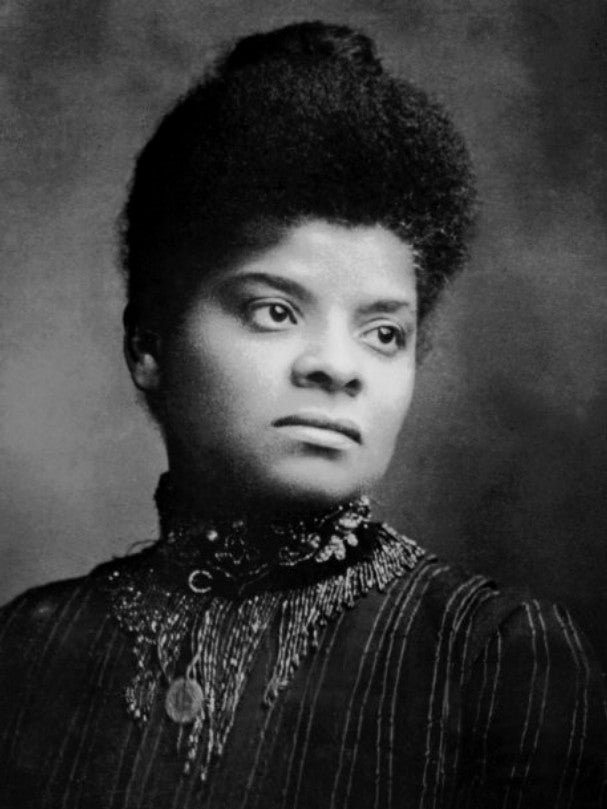
Then, at the level of the man’s feet, there begin three rows of white faces. Roughly thirty men and boys stare impassively into the camera. Moving forward, the members of each new row are younger than the one behind. Front and centre, a boy cranes his face upwards, blankly contemplating the lynched man, the only person ignoring the camera; he’s around 10 years old.
Today, the world has come to know the power that images of racial violence can hold, but in 1893, Impey was breaking new ground. The photograph had been taken by a travelling photographer, one of many who profited from memorialising these killings. Such photographers printed postcards to sell to the mob, who kept them as souvenirs or boastfully sent them to friends and relatives. The photograph that Impey reproduced was forwarded to her by Albion Tourgeé, the white, by then retired, civil rights activist, who’d been sent it as a casual show of power.
Bressey believes Impey was the first white editor anywhere to print a photograph of a lynching in a magazine or newspaper. For Impey, the photograph would have represented a new higher level of journalistic truth – unequivocal validation of the stories she’d previously published.
But, says Bressey, “not only does she publish it; she's deliberately inverting the meaning. It’s an image of murderers. It’s intended as an image of an intimidation, and she turns it into an image of condemnation.” Impey placed herself firmly outside of the unified white community that the lynchers believed existed. In her accompanying editorial she asked, “How long will the callous nation look on?”
Whether Impey was aware of how pioneering she was being, Bressey doesn’t know – possibly she was fully aware; potentially, she was simply doing what felt right to her. Her lost archive leaves us guessing at how readers reacted, although it must have shocked anyone who saw it – and left them in no doubt of Impey’s willingness to do whatever it took to expose the evils she opposed.
The one person known for certain to have been spurred into action is Isabella Fyvie Mayo, whose involvement changed everything. Mayo was a Scottish philanthropist and suffragist, who achieved literary success writing as Edward Garrett, and who corresponded with Tolstoy and Gandhi. She’d recently begun writing to Impey and on receiving the lynching issue, Mayo invited her to her Aberdeenshire home to offer support. Impey immediately made the two-day trip to Scotland.
There, the pair agreed that Mayo would become a co-editor of Anti-Caste. They agreed to assemble a special edition on America and lynching, to expand circulation to 20,000, and to sponsor an African American spokesperson to come and lecture in Britain, seeing Wells as the ideal choice.
In Mayo, Impey had found a partner. Events quickened and ambition grew. In the invitation Impey wrote to Wells, she told her they were going to form a society akin to the international body Impey had imagined in her 1883 letter to Douglass.
Wells received Impey’s invitation while at Douglass’s home, and he told her: “You go, my child; you are the one to go, for you have the story to tell.”
After a week of seasickness, Wells arrived at Impey’s home. On 17 April 1893 she wrote in the Askew visitors book: “A quiet beautiful Sabbath, my first in England and a typical English house. This experience more than ever convinces me that: ‘For whatever men say in blindness; And in spite of the fancies of youth; There’s nothing so kingly as kindness; There’s no so royal as truth.’”
She and Impey soon received “a most hearty welcome” at Mayo’s house. Mayo was landlady and patron to three young Asian men. And these boarders became intimately entwined in the project; the three women and three men engulfed in planning and promoting Wells’ tour and in frantically mailing out thousands of copies of the special Anti-Caste edition.
Wells’ first public address was at a gathering in Mayo’s home, where the Society for the Furtherance of the Brotherhood of Man was launched. The small – engrossed and appalled – audience signed pledges to it immediately.
Wells then toured Scotland and England, as far south as Birmingham. And as the local newspapers of Edinburgh, Newcastle, Birmingham and Manchester gave her positive coverage, hundreds of audience members signed allegiance to local branches of the new society.
Sometimes, Wells was joined on stage by Celestine Edwards, a long-term supporter and distributor of Anti-Caste. Edwards was a 35-year-old black man born in Dominica. He’d settled in the UK in his early twenties after a nomadic, seafaring youth and quickly built a reputation as a brilliant orator who addressed many issues. A staunch Christian and temperance campaigner, Edwards is thought to have been Britain’s first black newspaper, running Lux: A Weekly Christian Evidence Journal. While social justice had always figured in Edwards’ lectures, speaking with Wells, he focused on racism.
The two made a powerful double act. Though records are scarce, Bressey unearthed evidence that hundreds, if not thousands of people attended their lectures. At one meeting, it was necessary to commandeer a second hall to accommodate everyone – after which 438 people signed up to the society.
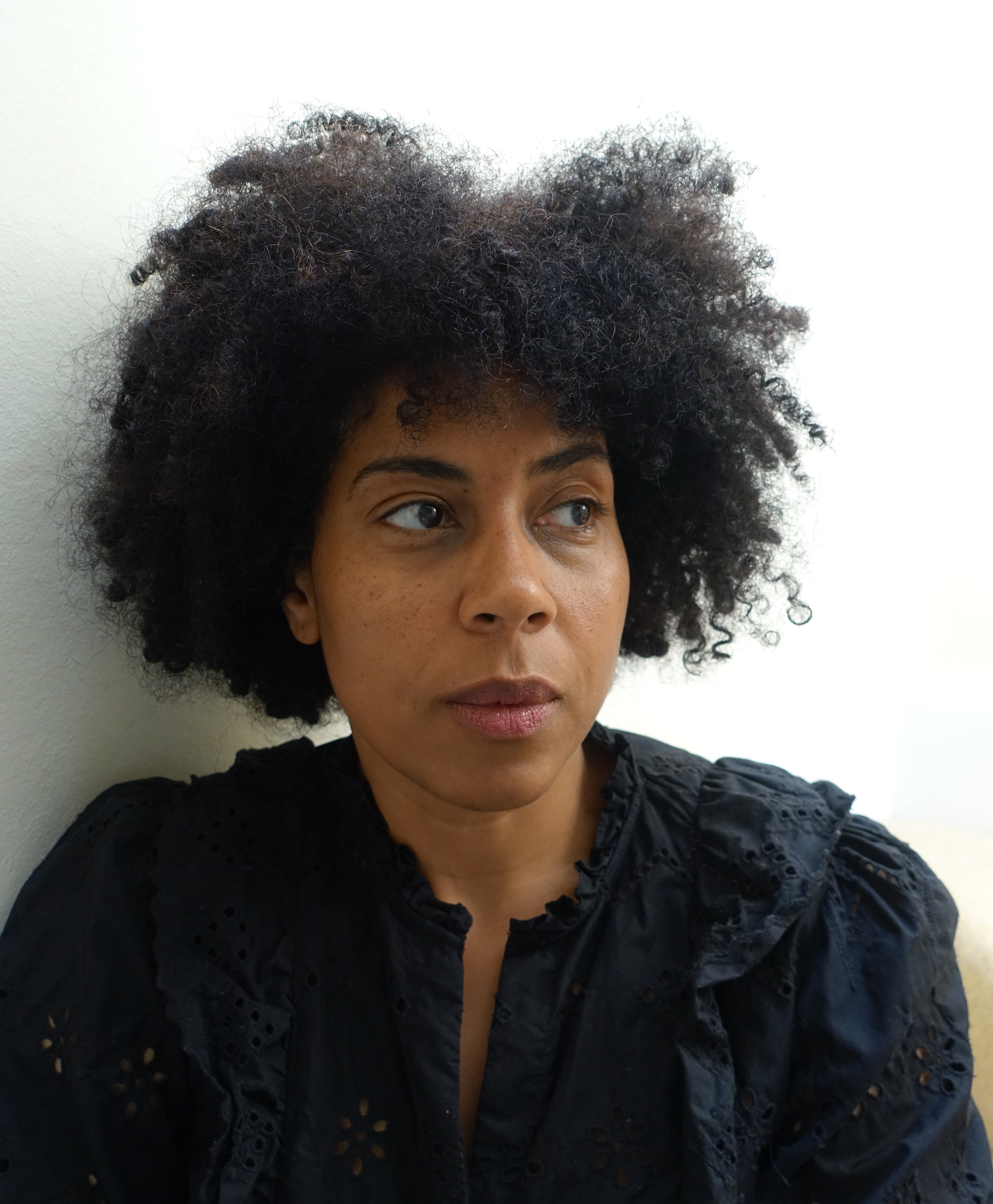
If Impey had set out first to build a community of readers, there was now a new more direct activism happening. People meeting physically across the country and committing to a society that recognised racial equality. Energy was building, Britain felt receptive.
But then, the movement was rocked by its first seismic blow.
When Wells returned to Mayo’s home from England, she learned that Mayo had summoned Impey to travel there immediately. In those whirlwind days of organising Wells’ tour, Impey had worked closely with one of Mayo’s boarders, a young “half-Indian” dentist named George Ferdinands, from what’s now Sri Lanka. When Impey had retreated to Somerset for a break, she’d had a rush of emotion and written to Ferdinands, in effect, proposing marriage.
In her letter, according to Wells, Impey had said that she felt the same affection that she was certain Ferdinands felt for her – and “that she was taking this advance step because she knew he hesitated to do because he was of a darker race … and that she rejoiced to give this proof to the world of the theories she had approved – the equality of the brotherhood of man.”
As soon as she’d sent this letter, Impey realised that it was a terrible mistake – a dreadful misinterpretation of the “warm and unconventional friendship” she’d struck with Ferdinands. She wired him immediately requesting he burn the letter.
But it was too late. Shocked by Impey’s letter – his admiration for her misconstrued as romantic interest – Ferdinands had given it straight to Mayo. And Mayo, upon Impey’s arrival, exploded.
Wells described the altercation between her “two ideals of noble womanhood” as being “the most painful scene in which I ever took part.” Mayo accused Impey of being a nymphomaniac, unstable, insane and said that she’d shamefully jeopardised all their work.
Impey was no match for the formidable Mayo. And, finally, Mayo turned to Wells and demanded that she choose between the two.
Wells spent a sleepless night, praying and deliberating. Then, in the morning, told Mayo that Impey had made a mistake – but after Impey’s years of being a friend and servant to Wells’ race, she was not going to abandon her. Impey, Wells said, was not what Mayo was accusing her of being.
Mayo’s anger now fell on the American. Wells and Impey departed immediately – and Mayo withdrew her support of the tour.
Wells delivered only her already scheduled lectures and Impey returned to Street. Whatever emotions she wrestled with there, as Wells and Edwards completed the tour, is lost to history.
Impey likely hoped to reunite with Wells in London, where Wells wanted to attend May’s society meetings, so as to canvass the influential British figures who attended these. But Mayo demanded Impey didn’t appear in public. Chaperoned instead by a “German maiden lady”, Wells barely gained entry to any meetings.
As far as is known, Wells and Impey last saw each other in Southampton, when Wells went to board the ship home. Bidding her friend farewell, Impey admonished herself for what had happened. But Wells insisted she’d made the correct decision in standing by her, and set sail intent on putting the episode behind her.
Only, when she arrived home, Wells learnt that Mayo had written furious letters denigrating Impey and vilifying Wells, to Douglass, Tourgeé, Wells’ editor, and other senior figures. Wells had to write to each defending herself and Impey, until finally she felt that they accepted her version of events.
Advised to keep the incident private, Wells kept it quiet for 30 years, until writing her autobiography, she felt the need to set the record straight.
Bressey is unable to explain Mayo’s reaction. Naturally, she says, there’s been speculation that Mayo and Ferdinands were lovers – they lived together for the rest of life and one source says Mayo treated him like a son. Bressey shudders at the personal humiliations Impey suffered, such as having to repeatedly explain herself at Quaker meetings. “It must have been mortifying,” she says. And for the movement, the vendetta triggered many changes.
After having insisted that all copies of Anti-Caste bearing her name were recalled and her name struck out, Mayo led society’s committee – now renamed the Society for the Recognition of the Brotherhood of Man (SRBM) – to create a new journal as its official mouthpiece. In July 1893 Fraternity was launched. Its editor was Edwards, cementing his growing influence.
There are no records of what Impey was experiencing at this point, although it’s known she remained active in a West of England branch of the SRBM. But while she must have been frustrated, Bressey believes she’d have been phlegmatic. “Catherine was so egoless, I don’t think she felt any need to have ownership over the movement,” she says, believing that she was likely very happy to have Edwards leading things forward, for that in many ways, represented the sort of development Impey had always hoped for.
Conversely, Edwards was entirely respectful of Impey’s contributions. The volume and issue number of the first Fraternity showed it as a continuation of Anti-Caste. And its front-page paid homage to the publication. “For more than six years Anti-Caste has been doing a quiet work in England, slowly but surely permeating society, and winning the hearts of good men and true women.”
Fraternity was a more substantial publication than Anti-Caste and Impey’s former subscribers embraced it as a further step forward. Edwards was a bold and interesting editor. Even more so than Impey, Edwards was comfortable criticising Christian institutions – missionaries and the work of Cecil Rhodes were frequently denounced.
Also, Bressey says, “Edwards was concerned about issues of the working class. He’s an ordinary man, and he’s making connections between imperial exploitation abroad and inequalities at home.” This gave a new dimension to the movement, and likely widened its appeal. And all the while, Edwards kept touring. There are reports of him addressing crowds of over 3,000 and always people were afterwards invited to join the SRBM.
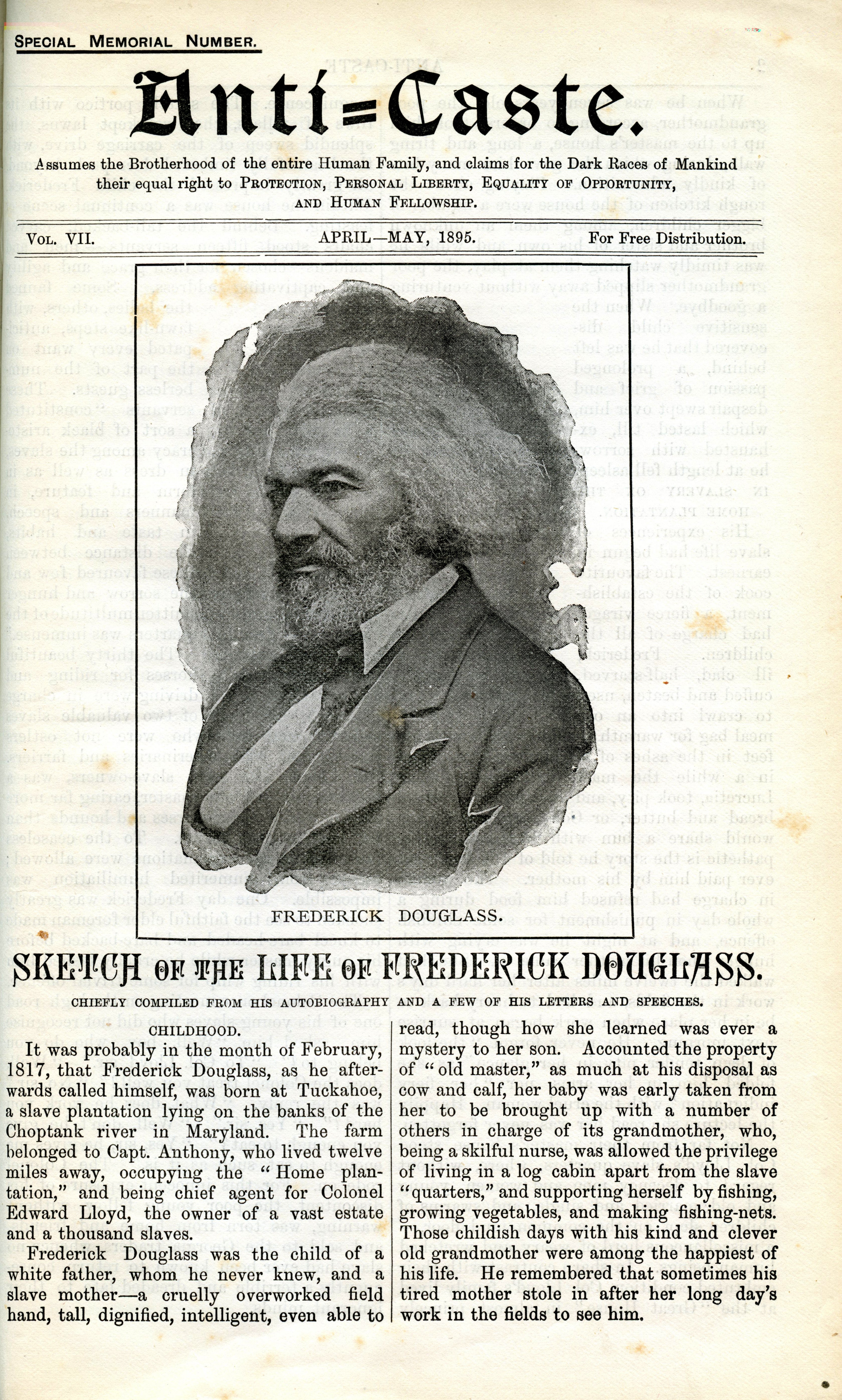
Remarkably, in the autumn of 1893, Edwards and Mayo invited Wells to make a second UK tour. Perhaps, surprisingly, she came. But arriving on 1 March 1894, she found Impey still nowhere to be seen. And the SRBM – divided and in increasing disarray – essentially abandoned her.
She gained the crucial support of a Liverpudlian clergyman, but was essentially left to her own devices. She wrote urgently to Douglass asking for a formal letter of introduction to help her secure speaking invitations. Douglass’s reply asked his protégé if she’d made a mistake in going. Dismayed by his suspicions, Wells wrote back at length to allay them. In doing so, she confessed there had been signs of trouble in the letters she’d earlier received. Following up on the initial invite, Mayo had again asked Wells to disavow Impey. But Wells had chosen to ignore this when a separate letter from Edwards pledged the society’s unconditional support.
On her arrival, however, Mayo made the exact same demand. And when Wells again refused, Mayo, once more, withdrew support.
But of far greater significance, Edwards, was “so ill with influenza and rheumatic fever” he could no longer work.
Although Douglass eventually replied, facilitating Wells hugely successful second tour, the SRBM had entered its terminal decline. Through that spring, Edwards’ illness worsened and come summer, he sailed for Dominica to try to regain his health. But there on 25 July 1894, aged 37 or 38, Celestine Edwards died.
He had worked so ceaselessly and intensely, and carried such a huge emotional labour, Bressey says, “his friends and colleagues clearly felt that he’d worked himself to death”.
While Edwards had edited Fraternity, the schism between Mayo and Impey had been managed and kept largely out of public view. If he had lived, Bressey suspects that the movement might well have overcome its internal fractures, and continued to grow. But with his loss, the divisions became irreparable. “His death,” she says, “is the real tragedy of the movement.”
Edwards’ leadership gone, the SRBM became rudderless. The Scottish SRBM branches stayed loyal to Mayo, those in the southwest stood with Impey, and those in between were forced to take sides. And still Mayo attacked.
In the August 1894 issue of Fraternity – now numbered so as to no longer acknowledge Anti-Caste and published without a stated editor – an anonymous article appeared, entitled “Female Accusation”. No protagonists were named in this diatribe but it denounced “elderly, dowdy and disappointed” white British women who imagined that black men might love them, deriding the moral failings of such women.
Come October, Fraternity announced that the Scottish branches were now in charge of the SRBM: Mayo, president; her deputy, Ferdinands.
In response, Impey and the southwest branches joined other English groups who rejected Mayo to launch a third publication – The Bond of Brotherhood. For this new title, Impey wrote “The Obliterated Sense of Brotherhood” and “Fear; The Explanation”, two essays that Bressey counts among Impey’s most provocative.
In the first, Impey argued that the goals of the SRBM were not so much opposing lynching and other violence, but addressing the root causes of these terrible actions – that is prejudice itself. She took aim at the constant drive to divide society, and white people’s wish to only interact with people of colour in relationships of widely imbalanced power.
“Unbar the doors of schools, the workshops, and the churches,” Impey wrote, “and relinquish that stony determination to exclude one gentle and forgiving race (your kinsmen) from the common life that all beside are privileged to enjoy – and prejudice, that offspring of misconception and fear, will melt in thin air.”
This fear that she wrote of, she picked up in the next essay, in which she saw white people of the American South as afraid of “negro supremacy”. Building a society around an imagined “white supremacy” was their response. A fearful refusal to grant African Americans “civil equality” or to allow integration yielded a “cruel and monstrously, lavishly unjust” society.
Wells’ second tour had instigated the formation of a British Anti-Lynching Committee. While this feels progressive, Bressey laments Impey’s absence. “The focus on lynching means it loses that idea of equality,” she says, “And it certainly loses that broad sense of an international community, recognising that racial prejudice manifests itself differently in different places, but that it has the kind of structure that connects itself.”
Wells herself was a nuanced thinker whose journalism explored how complex constructions of sexuality and gender around racial divides fed into racist ideologies, but that too was absent from the British press coverage. “It's much more about a kind of outrage over the performance of lynching, which of course, is outrageous,” Bressey says. “But it’s moving away from the very difficult issues of white supremacy and complicity in those structures as to why those things happen.”
The new freedom with which Impey wrote for The Bond of Brotherhood was, however, short-lived. In its January 1895 issue, the paper carried a lengthy letter from Joseph Malins, the Quaker colleague with whom Impey had twice travelled to the US. In it, Malins again tried to justify the reunification of international Quaker lodges, with the organisation accepting that meetings in southern states remained segregated.
This – once again – was a red line for Impey. She and her west of England colleagues resigned from the SRBM. Impey wrote of her pain in making this decision but reminded everyone that in its founding, society members had pledged to refrain “from all complicity” with any form of racial oppression.
That March, while Ellen and Impey hosted another visiting African American activist, a familiar title was published alongside Fraternity and The Bond of Brotherhood. Regretful and apprehensive about undertaking “so arduous a task”, Impey relaunched Anti-Caste.
Whatever her misgivings, she threw herself back into it, collating articles, announcing events, and putting out calls for financial support and contributions. In an editorial, she wrote that the “idea that colour has any place whatever in determining the relations of members of the human family towards each other must everywhere be wiped out.”
The next issue carries Anti-Caste’s second ever illustrated cover: a portrait of Frederick Douglass. It is, though, to mark Douglass’s death. The issue celebrated his life and reproduced one of his final essays – Impey as loyal as ever to distributing the words of the people she admired. But Douglass’s passing would have fallen heavily on Impey. And even more crushing would have been the death of her mother soon after.
The next issue of Anti-Caste, published in July 1895, was the last. It gave no indication that it was and Bressey is at a loss to say why exactly it was. She suspects that after a decade of relying on her sister and mother’s support, Impey simply had to contribute more to the running of the farm.
Four months later, in Bristol, 30 miles north of Impey’s home, a statue was erected to celebrate Edward Colston, a slave trader who’d died 174 years earlier. That such a statue could be erected is indicative of the fact that 19th-century Britain was home to myriad forms of prejudice, but Bressey argues that more recognisably modern forms of racism became entrenched only after the First World War. Having wrestled with the ghost of Impey – and still feeling the pull of the even more elusive spirit of Edwards – she is working now to reanimate further 19th-century figures. She wants to tell the stories of immigrants in Victorian Britain and to explore the diverse communities and shared spaces that then existed. Her sense is that there was greater harmony than many would credit.
The movement that Catherine Impey instigated in that milieu must ultimately be considered a failure. As a political campaigner, Impey’s rigidity and absolutism on key issues, likely limited her effectiveness. Instead, Impey believed that her thoughtful, matter-of-fact writing, driven by faith and deep-felt morals, would “little by little” be enough.
Bressey, near the end of her book, questions if simply informing people of wrongdoing is ever, by itself, enough to change society. But then, if Impey had first attempted to build a virtual community of readers, the society she inspired had started to bring people physically together through Wells and Edwards. What might have happened if not for Mayo’s venom and Edwards’s death is forever moot.
“It does feel that it could have gone a different way,” says Bressey. She laments the fact that the critical intersections of race and class never became foundational to the Labour Party which was founded in 1900, when they so easily could have. “In that way,” she says, “the lasting political legacies don’t come through. And that is really sad, because we’re still struggling with very similar questions. We might have been in a place where we’d been working on them for a hundred years.”
Join our commenting forum
Join thought-provoking conversations, follow other Independent readers and see their replies
Comments